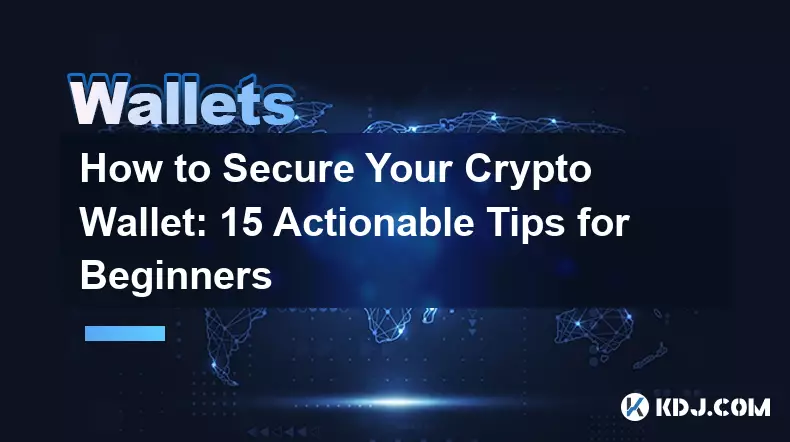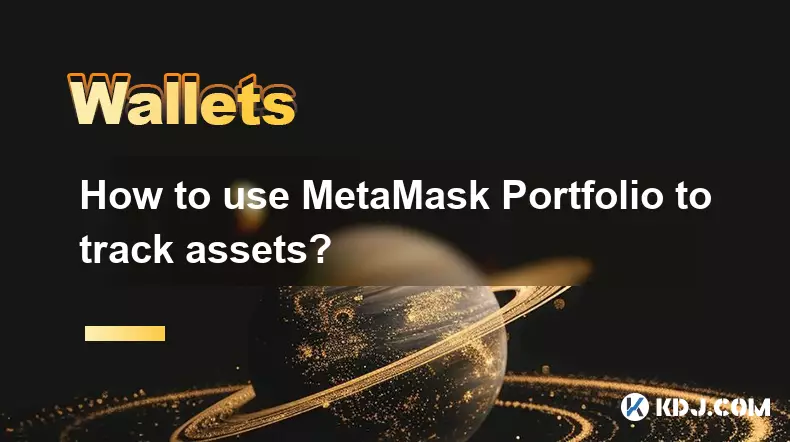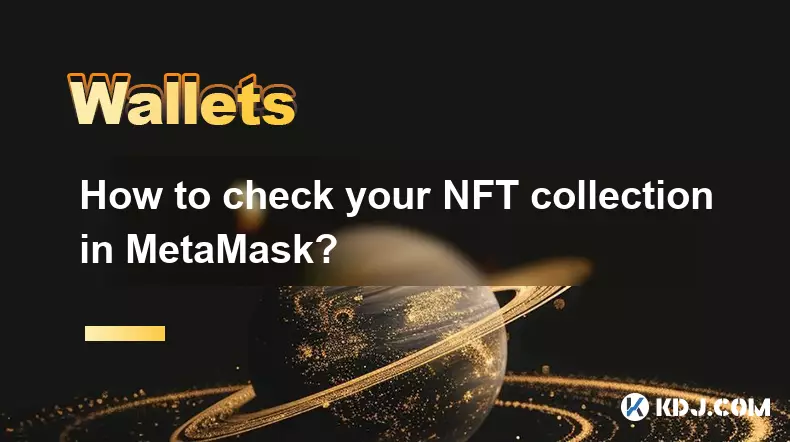-
 bitcoin
bitcoin $101752.865364 USD
-1.09% -
 ethereum
ethereum $3382.985899 USD
-1.38% -
 tether
tether $0.999658 USD
0.04% -
 xrp
xrp $2.272505 USD
-1.51% -
 bnb
bnb $989.089004 USD
0.14% -
 solana
solana $156.962612 USD
-3.08% -
 usd-coin
usd-coin $0.999776 USD
0.01% -
 tron
tron $0.290786 USD
-0.69% -
 dogecoin
dogecoin $0.174594 USD
-2.86% -
 cardano
cardano $0.560085 USD
-3.55% -
 hyperliquid
hyperliquid $40.023704 USD
-5.75% -
 chainlink
chainlink $15.324649 USD
-2.78% -
 bitcoin-cash
bitcoin-cash $493.576540 USD
-3.52% -
 zcash
zcash $571.320038 USD
-12.05% -
 stellar
stellar $0.280066 USD
-4.26%
How to Secure Your Crypto Wallet: 15 Actionable Tips for Beginners
Always store your seed phrase offline and never share it—exposure means total loss risk.
Nov 05, 2025 at 01:54 am

Understanding the Importance of Wallet Security
1. Cryptocurrency wallets store private keys, which are essential for accessing and managing digital assets. Without proper protection, these keys can be stolen or compromised, leading to irreversible loss.
- Unlike traditional banking systems, blockchain transactions are irreversible. If funds are sent due to a compromised wallet, there is no central authority to reverse the transaction.
- The decentralized nature of cryptocurrencies means users bear full responsibility for their security. No customer service hotline can recover lost access.
- Phishing attacks, malware, and social engineering schemes are constantly evolving, targeting inexperienced users who may not recognize red flags.
- A single mistake—like sharing a seed phrase or downloading malicious software—can result in total asset loss. Awareness and proactive habits are critical from day one.
Choosing the Right Type of Wallet
1. Hardware wallets, such as Ledger or Trezor, offer high security by storing private keys offline. They are resistant to online hacking attempts.
- Software wallets (hot wallets) like MetaMask are convenient for frequent trading but remain connected to the internet, increasing exposure to threats.
- Paper wallets involve printing keys on physical media. While air-gapped, they risk damage, loss, or theft if not stored securely.
- Mobile wallets provide accessibility but are vulnerable if the device is lost or infected with spyware.
- For beginners holding significant value, a hardware wallet combined with backup measures offers the best balance of security and usability.
Implementing Strong Access Controls
1. Always set a strong PIN code on your hardware or mobile wallet. Avoid common combinations like '1234' or birthdates.
- Enable two-factor authentication (2FA) where available, preferably using an authenticator app instead of SMS, which is susceptible to SIM swapping.
- Store your recovery seed phrase offline—never digitally. Writing it on paper or using metal backups protects against data breaches.
- Never share your seed phrase with anyone, regardless of how legitimate the request appears. Legitimate companies will never ask for it.
- Splitting your seed phrase using Shamir Backup (available on some devices) adds redundancy and reduces single-point failure risks.
Avoiding Common Scams and Threats
1. Be cautious of fake wallet apps on official app stores. Download only from verified developer websites.
- Watch out for phishing websites mimicking exchanges or wallet providers. Double-check URLs before entering credentials.
- Ignore unsolicited messages offering free tokens or tech support. These often lead to keylogging or remote access scams.
- Disable clipboard monitoring features when handling addresses. Malware can swap copied wallet addresses with attacker-controlled ones.
- Regularly update firmware and wallet software to patch known vulnerabilities exploited by emerging threats.
Securing Your Digital Environment
1. Use a dedicated device for managing crypto assets, especially when using hot wallets. This limits exposure to risky browsing behavior.
- Install reputable antivirus and anti-malware tools to detect keyloggers and screen capture software.
- Avoid public Wi-Fi when accessing your wallet. Use a trusted network or a secure VPN connection.
- Encrypt your device’s storage so that even if it's stolen, the data remains inaccessible without the decryption key.
- Periodically audit connected dApps and revoke permissions for those no longer in use to prevent unauthorized transactions.
Frequently Asked Questions
What should I do if I accidentally shared my seed phrase?Immediately transfer all funds to a new wallet generated on a clean device. Assume the compromised wallet is no longer safe under any circumstances.
Is it safe to take a photo of my seed phrase?No. Digital copies, including photos, screenshots, or cloud backups, expose your keys to hacking, leaks, or unauthorized access. Always keep it physical and offline.
Can someone hack my wallet just by knowing my public address?No. Public addresses are designed to be shared and cannot reveal private keys. However, linking your identity to the address may make you a target for social engineering.
Should I use the same password for multiple wallets?Never reuse passwords across platforms. Unique, complex passwords reduce the risk of cross-account compromise in case one service suffers a data breach.
Disclaimer:info@kdj.com
The information provided is not trading advice. kdj.com does not assume any responsibility for any investments made based on the information provided in this article. Cryptocurrencies are highly volatile and it is highly recommended that you invest with caution after thorough research!
If you believe that the content used on this website infringes your copyright, please contact us immediately (info@kdj.com) and we will delete it promptly.
- Ripple (XRP) in 2026: Hold or Fold? A Look at XRP's Future and Emerging DeFi Alternatives
- 2025-11-08 18:35:01
- Zcash ZEC Coin Price Explosion: From Privacy Niche to Center Stage
- 2025-11-08 18:55:01
- Berachain Price Prediction: Navigating the Honeycomb Hype in Crypto
- 2025-11-08 18:55:01
- Arthur Hayes, Gold, and Bitcoin: A Modern Monetary Trinity?
- 2025-11-08 19:15:01
- Shiba Inu's Next Move: Navigating a Shifting Market
- 2025-11-08 19:20:01
- Pakistan's Crypto Crossroads: Balancing Opportunity with Asset-Backed Realities
- 2025-11-08 19:20:01
Related knowledge

How to use MetaMask Portfolio to track assets?
Nov 08,2025 at 05:40am
Getting Started with MetaMask Portfolio1. Download and install the MetaMask mobile app from the App Store or Google Play. Open the app and select 'Imp...

How to check your NFT collection in MetaMask?
Nov 06,2025 at 08:20pm
Accessing Your NFTs in MetaMask Wallet1. Open the MetaMask browser extension or mobile app and ensure you are logged into your wallet account. Once in...

Why is the MetaMask swap feature failing?
Nov 06,2025 at 09:20pm
Understanding MetaMask Swap FailuresMetaMask, one of the most widely used cryptocurrency wallets, enables users to swap tokens directly within the int...

How to update the MetaMask extension in Chrome?
Nov 08,2025 at 07:39am
Updating the MetaMask extension in Chrome is a simple process that ensures you have access to the latest security features, performance improvements, ...

How to import an account into MetaMask using a private key?
Nov 07,2025 at 07:40am
Importing an Account into MetaMask with a Private KeyMetaMask is one of the most widely used cryptocurrency wallets, particularly within decentralized...

What to do if my MetaMask wallet was compromised?
Nov 06,2025 at 04:59pm
Immediate Steps to Take After a Compromised MetaMask Wallet1. Disconnect your device from any phishing websites immediately. If you clicked on a suspi...

How to use MetaMask Portfolio to track assets?
Nov 08,2025 at 05:40am
Getting Started with MetaMask Portfolio1. Download and install the MetaMask mobile app from the App Store or Google Play. Open the app and select 'Imp...

How to check your NFT collection in MetaMask?
Nov 06,2025 at 08:20pm
Accessing Your NFTs in MetaMask Wallet1. Open the MetaMask browser extension or mobile app and ensure you are logged into your wallet account. Once in...

Why is the MetaMask swap feature failing?
Nov 06,2025 at 09:20pm
Understanding MetaMask Swap FailuresMetaMask, one of the most widely used cryptocurrency wallets, enables users to swap tokens directly within the int...

How to update the MetaMask extension in Chrome?
Nov 08,2025 at 07:39am
Updating the MetaMask extension in Chrome is a simple process that ensures you have access to the latest security features, performance improvements, ...

How to import an account into MetaMask using a private key?
Nov 07,2025 at 07:40am
Importing an Account into MetaMask with a Private KeyMetaMask is one of the most widely used cryptocurrency wallets, particularly within decentralized...

What to do if my MetaMask wallet was compromised?
Nov 06,2025 at 04:59pm
Immediate Steps to Take After a Compromised MetaMask Wallet1. Disconnect your device from any phishing websites immediately. If you clicked on a suspi...
See all articles





















![The Graph Price Prediction [GRT Crypto Price News Today] The Graph Price Prediction [GRT Crypto Price News Today]](/uploads/2025/11/07/cryptocurrencies-news/videos/690d4df44fe69_image_500_375.webp)



















































